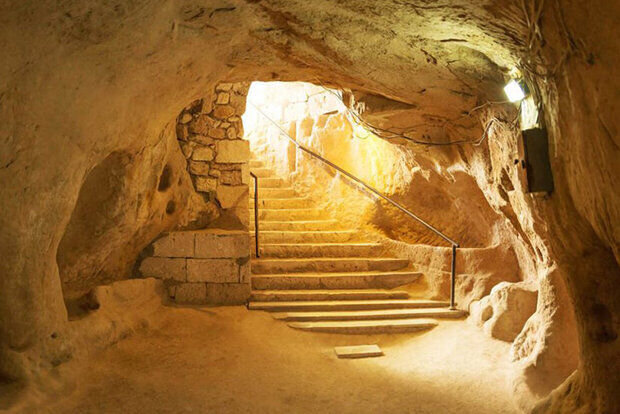Massive underground city in central Iran made national heritage

TEHRAN –A massive underground city located in Tafresh, central Iran, has recently been inscribed on the national heritage list, ILNA reported on Wednesday.
The hand-carved underground city is situated under the modern city of Tafresh and with an area of three hectares, it is one of the largest underground areas in Iran and even in West Asia.
Two archaeological seasons have been carried out on the underground city so far and subterranean spaces and passageways covering 400 square meters have been excavated by archaeologists and cultural heritage experts.
The underground city was accidentally discovered several years ago during a construction operation. Narratives say that it sheltered inhabitants during the Mongol invasion of Persia in the early 13th century.
The hand-carved underground city can become a top tourist destination for domestic and international tourists, but there will need to be more accommodation options, including eco-lodges, according to local authorities.
Based on the academic findings, the creation of handmade troglodytic architectural sites depends on several factors including climatic and geographical conditions, defense, security, durability, and religion, which were deeply tied with the cultural, political, social, and economic circumstances. This architecture can be classified into various formal types in terms of their external form, internal space, and function (religious, tombs, residential, and shelter).
The handmade troglodytic architecture is a distinctive kind of architecture, which does not require major construction materials and consequently very low environmental load since its creation is majorly by extraction of space rather than the addition of mass. Architecture by subtraction rather than addition provides many opportunities that call for comprehensive research and analysis.
As there is no obligatory method in making spaces rather than material cohesion, there is no priority in constructing a troglodytic structure, either from the roof or from the floor. Dealing with stone blocks, rocks, and piles of the earth requires a variety of tools as an ax, hammer, chisel, and sledgehammer to shape the interior space.
In Iran, many magnificent cases of this architecture have taken place in different regions due to its various climates. This unique architecture is at odds with the conventional settlement patterns and construction methods and is always can take advantage of the mountains and valleys on the floor or wall, which is a good way to control climate fluctuation in different regions.
Iran is a haven for ancient troglodytic architecture which is somewhat forgotten though they are filled with life and creativity. The northwest Kandovan village is one of the most famous examples of troglodytic architecture in the country; its ice-cream cone-shaped homes resemble that of Turkey’s Cappadocia.
In October 2018, the country hosted the 3rd International Troglodytic Architecture Conference in which tens of experts, researchers, and academia discussed troglodyte-associated architecture, culture, and technology.
ABU/
